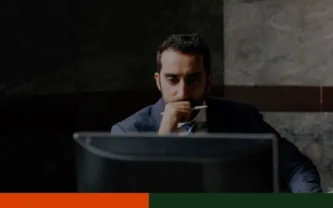Whether for a bank, insurance company, or other financial institution, most investigators are looking for the fastest and most reliable way to minimize risk to their organization. From approving new loans to investigating an insurance claim, access to reliable data on individuals can ensure that due diligence research isn’t missed, and that applicants and customers are who they claim to be.
We’ve compiled three scenarios from Thomson Reuters customer interviews that show what risk management and anti-money laundering searchers at financial institutions can learn from their comrades in the data search community, insurance fraud investigators.
Lesson 1: Questioning your applicant’s information
“We had a case two days ago of people who were in a bumper tap accident, where they’re claiming injury. It looks like the person that hit the claiming parties was involved with them in some kind of a business, says an Insurance Claims Supervisor. “It’s a business associate listed through public records, so that takes away any of the randomness of the accident having happened. Maybe there’s an explanation but we’re going to look into it.”
With all investigations, it’s often the information that is not present that can make a difference. In this instance, the Insurance Claims Supervisor is looking beyond the data provided by their customer to find any parallels between the two parties, which has revealed a potentially fabricated accident. Without a deeper search into the information provided by the applicant, this situation could have turned into an unsubstantiated paid claim and cost the insurance company money.
Similarly, when banks are exploring applicants for loans, they should look beyond the applicant’s information for any existing connections with investors, existing banking loans, and references that could be dubious.
Lesson 2: Researching a borrower’s history
According to a Special Investigation Unit (SIU) Supervisor, “Sometimes, particularly in a claim that there may be financial basis for concern, we look for any kind of bankruptcies, tax liens, or child support information just to see if there’s been some recent or long-term issue that might support the fact that this didn’t happen accidentally. If you have a car that’s had a couple of repossessions and then a bankruptcy and then all of a sudden, the car is stolen and burnt in the desert, then you know what we want to look at.”
It pays to look deeply into personal or business history that may not have been included in a loan application or due diligence investigation. For instance, if one or two real estate loans were not reported, this could affect the outcome of the loan application and put the organization at risk. In the long run, this omission could mean that if the bank sells this loan again, the unqualified loan could be flagged as not meeting standards, and the bank might have to repurchase the loan.
Lesson 3: Looking for inconsistencies
“On the bodily injury side, everybody knows what the problems are in California. We’re all familiar with the participants in the arena of insurance fraud — lawyers, doctors, and chiropractors. We always take the time to look into the new players on the scene. We’ve had instances where we run the name at the top of the letterhead, and it turns out that the attorney is disbarred. We won’t know that unless we take the time to know who this individual is,” says a SIU Supervisor.
For banks, knowing other professionals in the financial space is just as important as knowing the applicant for a loan. If an applicant is preapproved for the loan through a mortgage broker, knowing that broker’s industry reputation is an important element in deciding whether to move forward.
Even the smallest nuance can make a difference in fighting fraud. For instance, if there is a name variation for the applicant, running both names can bring up relevant information such as whether the person has bankruptcy or other financial issues in other states and countries. Without taking the time to investigate inconsistencies, gaps in a borrower’s profile may be missed.
Regardless of industry, fraud investigators are looking to save money, time, and regulatory risks. By learning from each other, investigators in both industries can uncover the newest rash of fraud tactics and enable investigators to get ahead their subjects.








